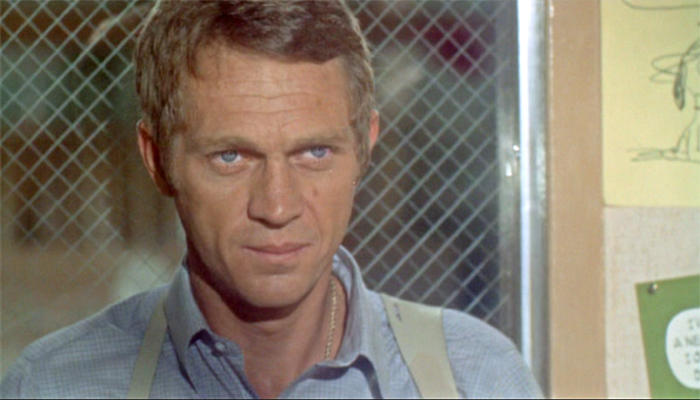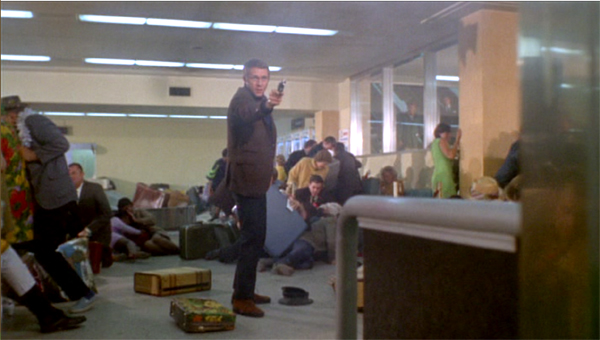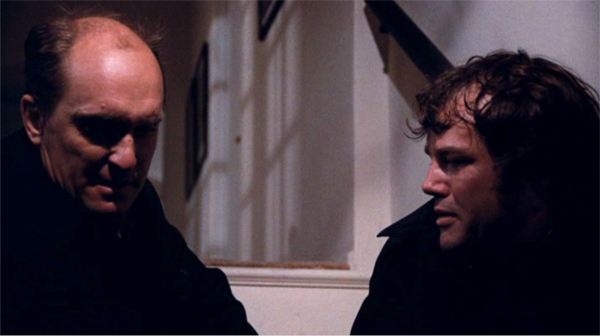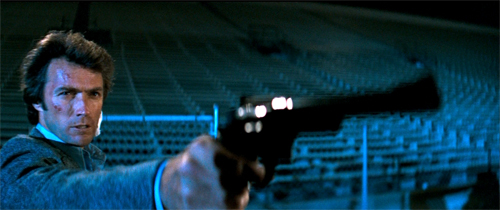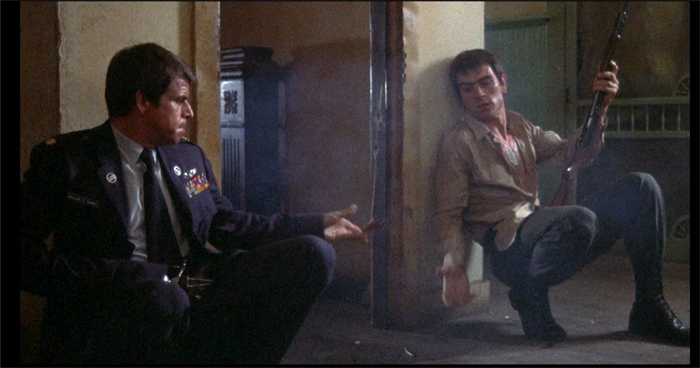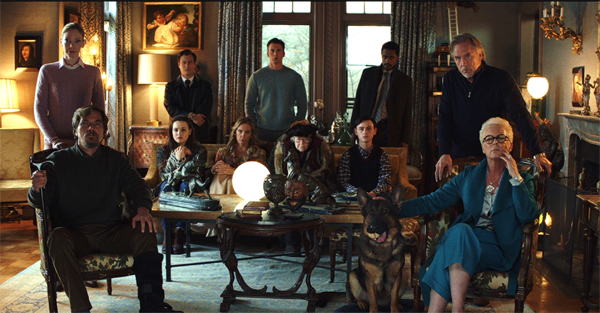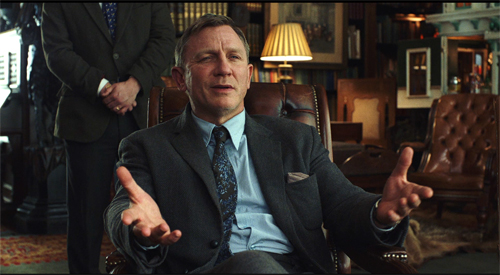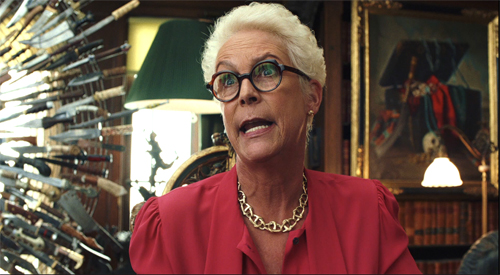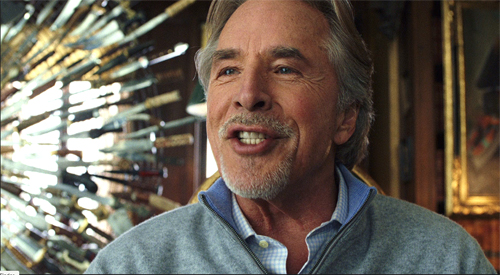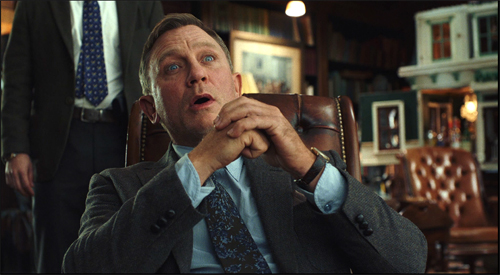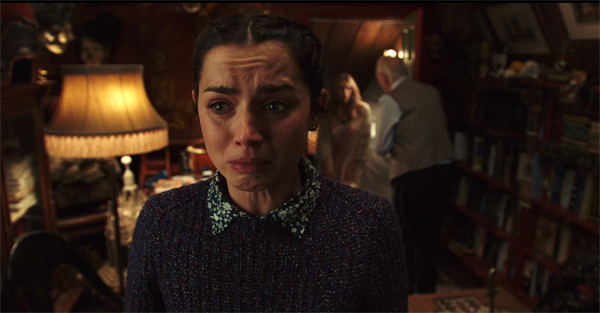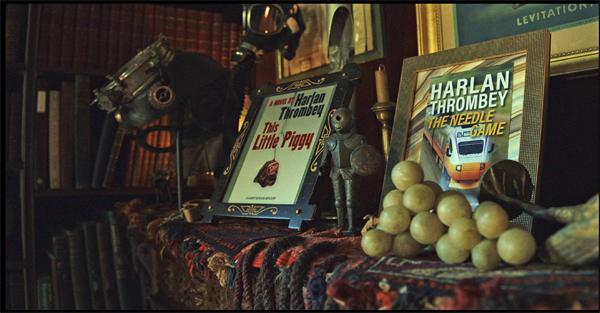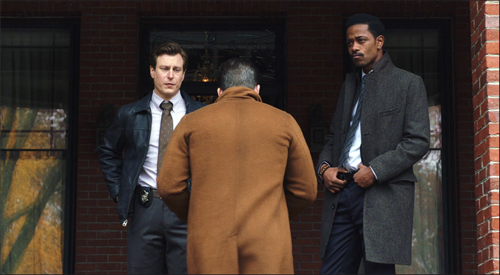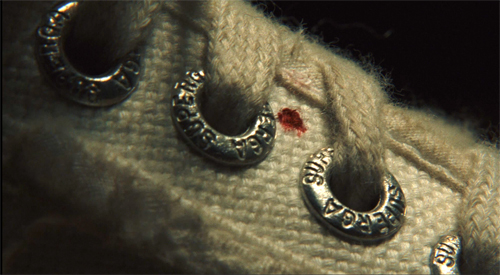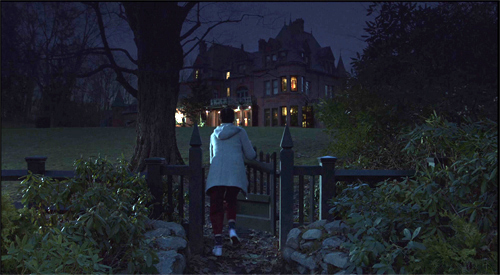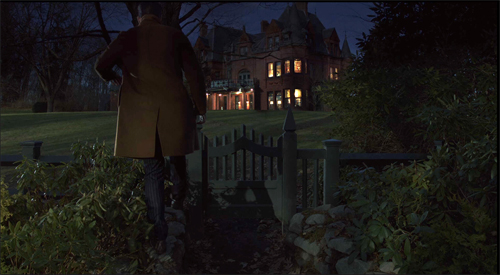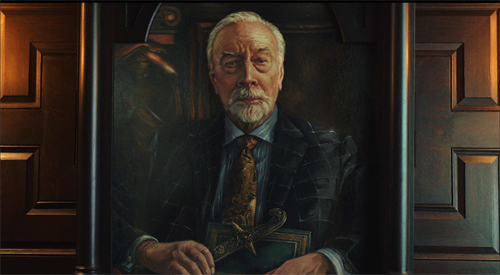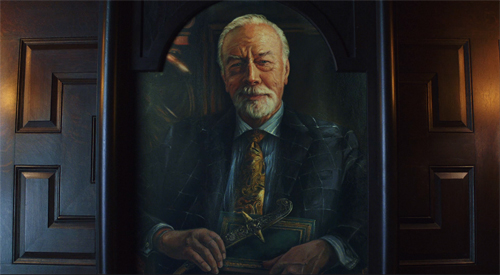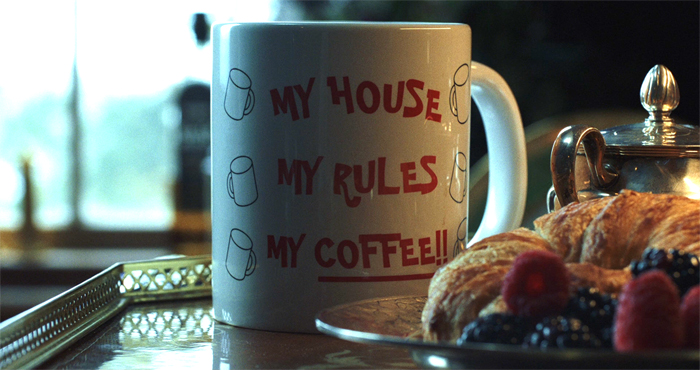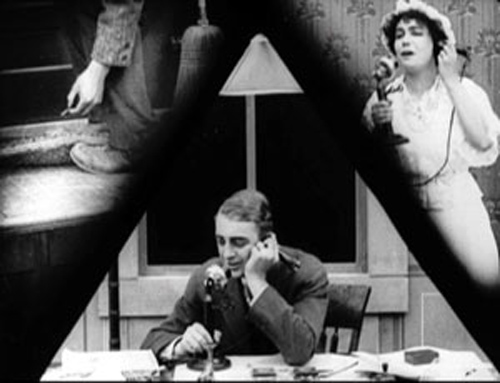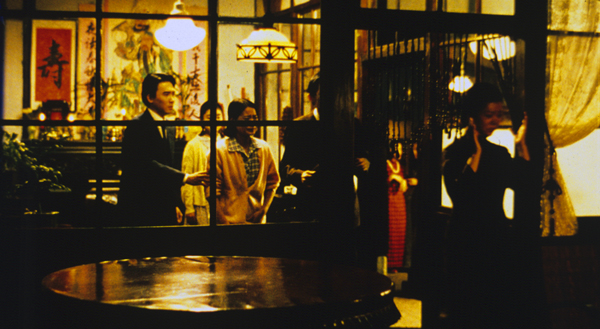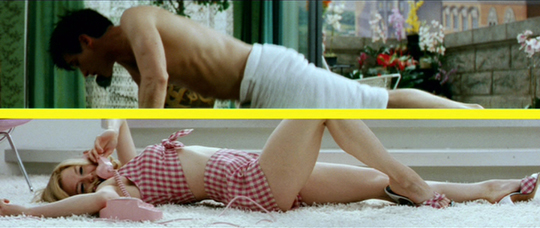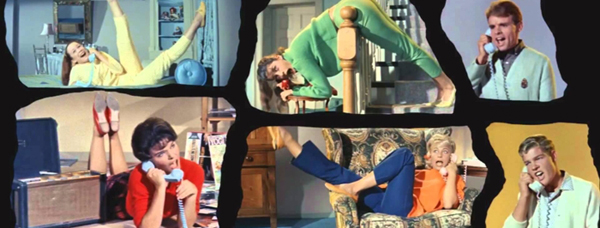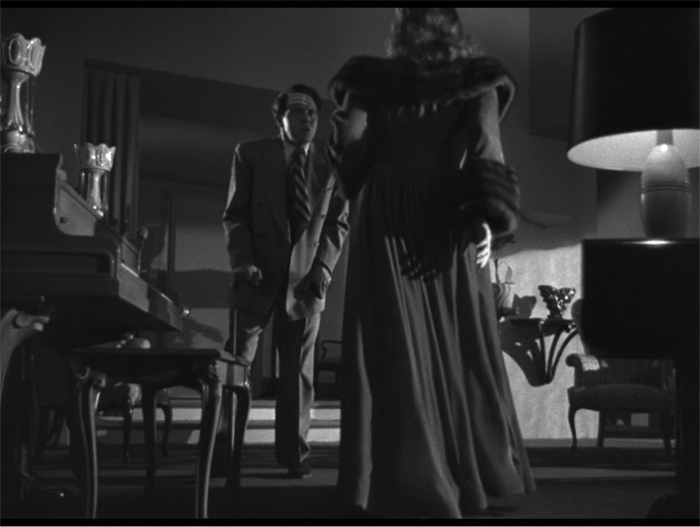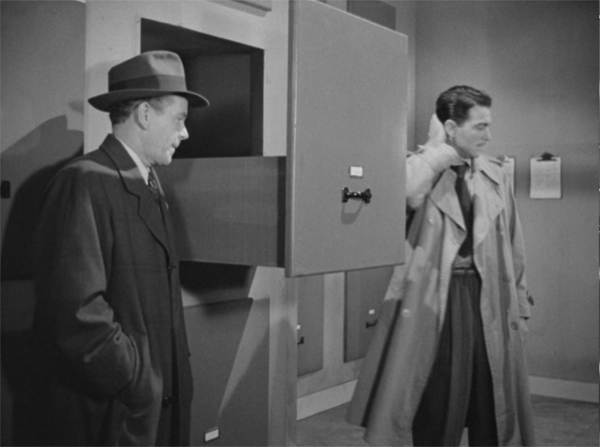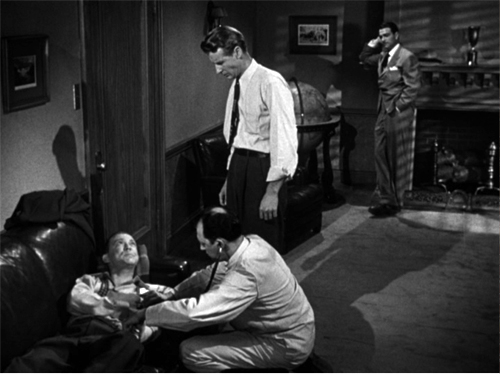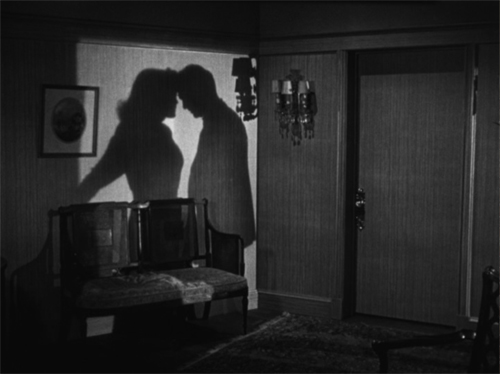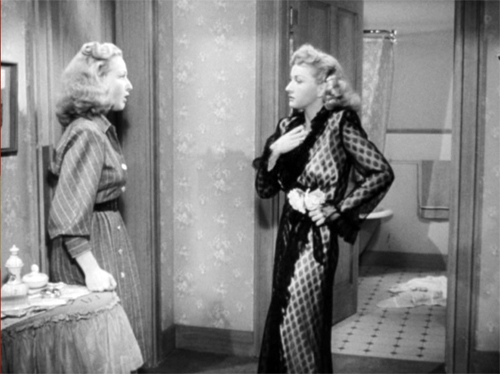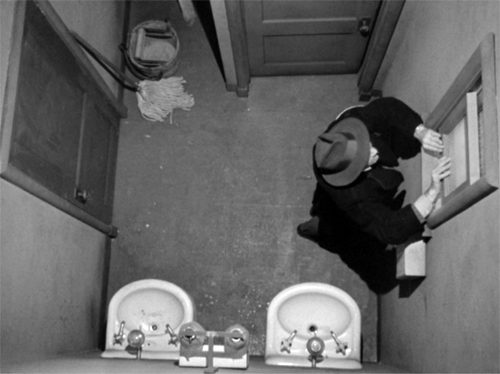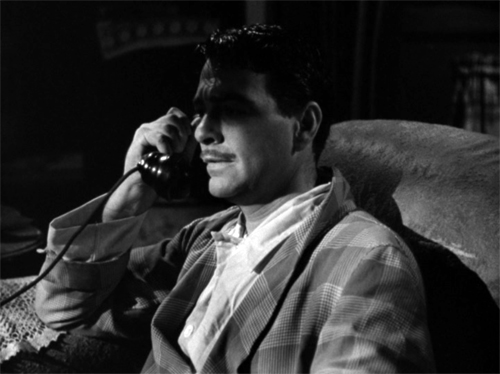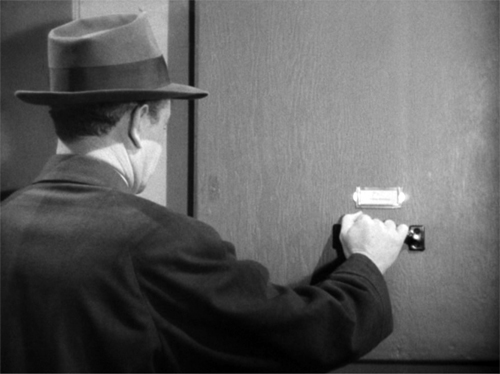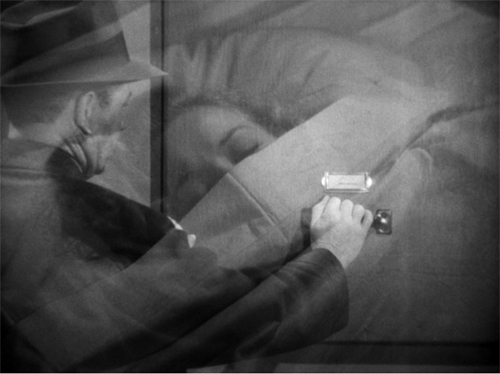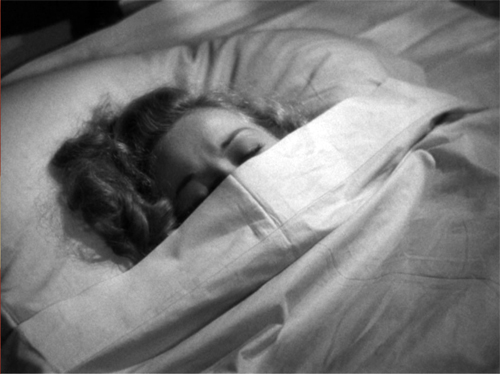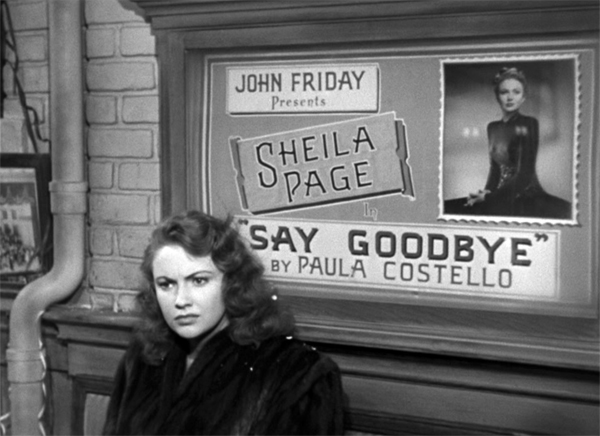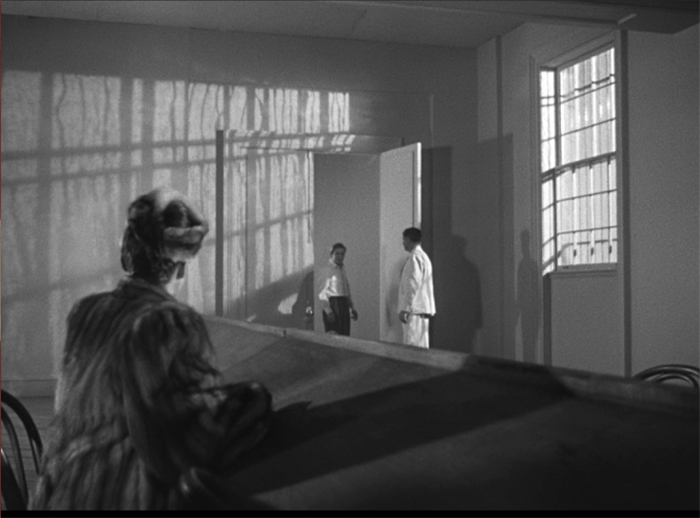Archive for the 'Hollywood: Artistic traditions' Category
Tarantino and the criticism of enthusiasm
Bullitt (1968).
DB here:
Critics who are carried away by a film want to share their excitement. Thus is born what the Cahiers du cinéma writers called a criticism of enthusiasm. The magazine’s editors suggested that the critic who most admired the film should write about it, on the premise that he (almost always a he) would make the best case for it.
Quentin Tarantino’s new book Cinema Speculation (HarperCollins) is a stirring instance of this mode. Fueled by the motormouth intensity of his interviews and the monologues in his movies, the sentences crackle with nerd exuberance.
The eagle-claws-through-the-chest initiation rite in A Man Called Horse blew my fucking mind. As did Barnabas Collins’ blood-squirting slow-motion wooden-stake evisceration in House of Dark Shadows. I remember, during both moments, staring at the screen with my mouth wide open, not quite believing a movie could do that.
Significantly, he took in these and other splendors as a child. Tarantino frames his essays on particular films within a memoir of moviegoing. Now approaching 60, he starts by explaining he started watching films at age 4, accompanying his parents and later the men his mother was dating as a single woman. Seeing the “adult” fare of the 1970s as a small boy gave him a lifelong love of exploitation, crime movies, and Black cinema. For him the Adolescent Window opened early.
 The opening chapter culminates in a life-changing visit to Black Gunn, escorted by his mother’s boyfriend Reggie.
The opening chapter culminates in a life-changing visit to Black Gunn, escorted by his mother’s boyfriend Reggie.
To one degree or another I’ve spent my entire life since both attending movies and making them, trying to re-create the experience of watching a brand-new Jim Brown film, on a Saturday night, in a black cinema in 1972. . . . [At a climactic scene of violence] the massive theatre full of black males cheered in a way the nine-year-old little me had never experienced in a movie theatre before. At the time–living with a single mother–it was probably the most masculine experience I’d ever been a part of.
At the end of the book he pays homage to another Black movie mentor, Floyd Ray Wilson. Living with Tarantino and his mother, Floyd dated the mother’s friend and became Tarantino’s teenage tutor on rock and roll and Blaxploitation. Floyd taught Tarantino the virtues of Willie Best, Stepin Fetchit, and Don Knotts. Floyd also wanted to be a screenwriter, and he inspired Tarantino to try his hand too. Django Unchained, our author says, springs from his tenuous friendship with Floyd, who wrote a Black western.
Knowing full well how a range of readers will respond to these accounts of interracial male bonding, with his usual insouciace Tarantino plows on through a series of critical essays on films that shaped his tastes, all rendered in a pitch of high enthusiasm.
Old School enthusiam
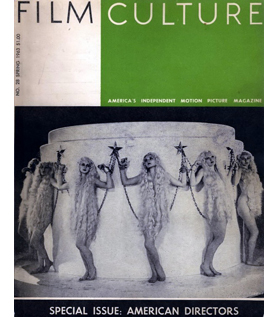 You can argue that the most epic display of the criticism of enthusiasm appeared in the spring 1963 Film Culture magazine. There Andrew Sarris published a roster of Hollywood directors under the rubric “The American Cinema.” Each director was given a filmography and critical commentary. Most important, they were grouped into snappy categories: Pantheon Directors, Third Line, Esoterica, Beyond the Fringe, and so on. In 1968, Sarris published the material as a book, expanded by a long prefatory essay, considering more filmmakers, and using other labels. “Esoterica” became “Expressive Esoterica,” for example, and “Third Line” became “The Far Side of Paradise.” Some directors were also re-sorted; Anthony Mann moved up from Esoterica to the Far Side. The category “Fallen Idols,” which included many of the most revered directors (Wyler, Huston, Kazan, Lean, Wilder, Zinneman), was now the snarkier “Less Than Meets the Eye.”
You can argue that the most epic display of the criticism of enthusiasm appeared in the spring 1963 Film Culture magazine. There Andrew Sarris published a roster of Hollywood directors under the rubric “The American Cinema.” Each director was given a filmography and critical commentary. Most important, they were grouped into snappy categories: Pantheon Directors, Third Line, Esoterica, Beyond the Fringe, and so on. In 1968, Sarris published the material as a book, expanded by a long prefatory essay, considering more filmmakers, and using other labels. “Esoterica” became “Expressive Esoterica,” for example, and “Third Line” became “The Far Side of Paradise.” Some directors were also re-sorted; Anthony Mann moved up from Esoterica to the Far Side. The category “Fallen Idols,” which included many of the most revered directors (Wyler, Huston, Kazan, Lean, Wilder, Zinneman), was now the snarkier “Less Than Meets the Eye.”
The 1963 original and the 1968 book created a revolution in film taste. Sarris had been polemicizing in favor of “the auteur theory” for some time, but with his encyclopedic survey he created a canon. He claimed that he wanted only to launch a systematic history of American cinema, but the result was hardly historical in a strong sense. What mattered was critical evaluation. Writing a history of Hollywood would amount to appraising its directors.
Directors hadn’t wholly been ignored by earlier writers. Griffith, Chaplin, Lubitsch, Flaherty, Stroheim, and Welles had been considered significant creative forces for some time. What Sarris sought to do was to map out the whole terrain of Hollywood to reveal a network of strong creators with distinctive “directorial personalities.” They were not merely craftsmen; they had artistic visions.
Sarris’s strategy was triumphantly successful. He included in his Pantheon not only the noteworthy figures I just mentioned but those revered by the Cahers du cinéma critics: Ford, Hawks, Hitchcock, Keaton, Lang, Ophuls, Murnau, Renoir, and von Sternberg. At least as important were his arguments in favor of second-tier figures like Aldrich, Borzage, Cukor, Minnelli, McCarey, Sturges, and Walsh. And so on down the line as he weighed the virtues of Gerd Oswald, Richard Quine, and dozens of others.
Sarris’s legacy remains. To this day books and articles continue to be devoted to the works of these directors, famous and lesser-known. They are staples of Hollywood history. At the same time, researchers have expanded Sarris’s purview by elevating some of his choices (e.g., Curtiz) and discovering major films by minor figures (e.g., Ulmer). Martin Scorsese’s Personal Journey through American Movies (1996) is very much in the Sarris spirit, offering some different categories but still committed to the auteurist canon.
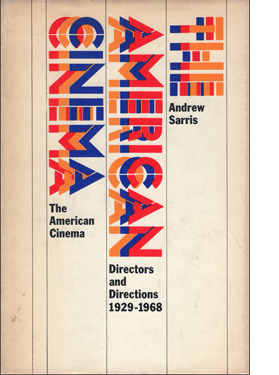 Film scholars today may question the tenets of the auteur theory, preferring to find involuntary cultural pressures in classic works, but to a surprising extent the big names remain central. And researchers discovering unexpected value in forgotten figures like Hugo Fregonese (subject of a retrospective at Bologna’s Cinema Ritrovato this year) are fulfilling Sarris’s edict that every film and filmmaker deserve serious scrutiny. (One critic has suggested that Fregonese would fit comfortably into Expressive Esoterica.)
Film scholars today may question the tenets of the auteur theory, preferring to find involuntary cultural pressures in classic works, but to a surprising extent the big names remain central. And researchers discovering unexpected value in forgotten figures like Hugo Fregonese (subject of a retrospective at Bologna’s Cinema Ritrovato this year) are fulfilling Sarris’s edict that every film and filmmaker deserve serious scrutiny. (One critic has suggested that Fregonese would fit comfortably into Expressive Esoterica.)
The book version of The American Cinema: Directors and Directions popularized Sarris’ aesthetic of classic Hollywood. Just as important, it was a tribute to enthusiasm-fueled cinephilia. Sarris might talk about research, but this was mostly about enjoyment, seeking out little-noticed pleasures in a vast flowering landscape. “If you received The American Cinema at the right moment in your life,” notes Kent Jones, “and many people including myself did, it came with the force of a divination, a cinematic Great Awakening.”
But films continue to be made, and how are we to appraise them? Some directors in Sarris’s survey continued their careers into the 1970s and beyond, but others emerged. Many of those became labeled the “New Hollywood.” From this perspective, Tarantino’s Cinema Speculation proposes a counter-canon, a cluster of filmmakers and films that demand to be appraised on terms that differ somewhat from those laid down by Sarris. Yes, they are solid artisans. Yes, they have “personal visions.” But their auteur artistry has its own commitments.
Sources of enthusiasm
Bullitt.
Central to those commitments is the idea of genre. In one of the richest essays in the book, Tarantino suggests that what follows Sarris’s period survey is a new Hollywood, which has two phases. In the first, Penn, Altman, and other filmmakers commit to criticize classic genres, pointing out their political and racial biases. The second phase consists of directors like Spielberg, Lucas, and De Palma who love genres and want to update and strengthen them, or to invent new ones, like the “Revengeamatic.” Tarantino appreciates both trends, but his sympathy lies with the second one. He praises some older genre directors like Don Siegel and is especially sensitive to New Hollywood filmmakers who either worked to update genres (Tobe Hooper) or balanced indulgence in the genre with some critique of it (Taxi Driver, Hardcore).
Tarantino’s favored 1970s genres are centered on violence: crime stories, westerns, urban adventures. In this, he follows audience tastes. Most people aren’t auteurists, least of all Tarantino’s 70s male mentors. He also focuses his attention on scripts, often providing backstory on how some of his favorites were revised in the production process.
More specifically, he’s interested in character and dialogue–again, mirroring what most moviegoers notice and enjoy. He analyzes character action and sometimes interprets it as reflecting public attitudes or the director’s temperament. He savors memorable lines of dialogue and reenacts the joy of audiences responding to them. In Taxi Driver:
Then the moment happened that made the whole theatre burst into hysterics. That one guy walking down the street, ranting and raving that he’s going to kill his woman (“I’ll kill ‘er! I’ll kill that bitch!”). We laughed so hard at that guy, we were a little disconnected from the movie for the next twenty minutes.
Travis Bickle’s Mohawk haircut triggers the same response. “The whole theatre burst out laughing. I’m talking hysterically laughing. I’m talking rolling in the aisles laughing–Get a load of that goddamn crazy fool!”
The concern for characters emerges further in Tarantino’s unabashed admiration for acting. Sarris’ American Cinema treated stars as plastic material for the director’s vision. For John Ford, John Wayne develops as a darkening version of western heroism. James Stewart is radically different in films by Capra, Preminger, and Anthony Mann. But Tarantino treats stars as bringing their own valences, which the director can fulfill more or less well. Steve McQueen is the privileged example.
The man embodies 1960s cool, and the films that respect that become singularly satisfying. Bullitt becomes a perfect vehicle for this paradigm of hip detachment.
This is the role he deserves to be remembered by. Because in this role he demonstrates what he could do that Newman and Beatty couldn’t.
Which is just be.
Just fill the frame with him.
There was craft at work here. Tarantino reveals that McQueen often trimmed his own dialogue, giving lines to others, because he knew the audience would be watching him. He could steal a scene with his pinky finger, as I tried to show here. But in Bullitt, he does so little that we watch him warily.
Tarantino doesn’t bother with description of how this minimalism works facially–the fixed blue-eyed stare, the enigmatic pinched lips, the flat brows. He goes straight to psychology: Bullitt doesn’t engage with anyone, so his mental states are opaque to us. His girlfriend admonishes him for his refusal to open up about his feelings. “Bullitt,” Tarantino says, “doesn’t explain to the audience or other characters what he’s doing or thinking. He just does them and we watch.” Here cool turns cold.
With performance as a central concern, Tarantino naturally reflects a lot on casting and performance. His vast knowledge of the genre and Hollywood actors, from stars to sidekicks, allows him to probe the actor’s development of the character, as he does with Burt Reynolds in Deliverance and Sylvester Stallone in Paradise Alley. He often speculates on what the film would be like if this role were filled by someone else. What if Lee Marvin replaced Burt Reynolds in Deliverance? What if The Getaway was recast making Stella Stevens McQueen’s wife, Richard Boone his major adversary, and Stuart Whitman the master mind? These “cinema speculations” are sometimes derived from actual casting choices, sometimes from Tarantino’s huge knowledge of Hollywood players.
Add in music, to which Tarantino is very sensitive, and you have an aesthetic tailored to audience pickup. He has almost no specific comments about imagery or camera technique, the sorts of things that audiences tend not to comment on. Above all, you know when you have a memorable movie moment if a line or character reaction or actions scene induces the audience to shriek in pleasure. From age 4, he claims, for him the thrill of cinema has been bound up with a crowd response. (I found this reassuring, as Perplexing Plots begins with an audience’s reaction to the climax of Pulp Fiction.)
Genre, character portrayal, memorable dialogue, performance filigree, the charisma of stars, and the immediate surge of audience appreciation–who else does this sound like? Pauline Kael.
Tarantino has called her the most influential person on his filmmaking; he pored over her collected reviews and channeled her voice. If Sarris was the impresario of classical studio production, Kael became the demanding guide to the New Hollywood. As Tarantino was absorbing the films, growing up with the flood of 70s features, he was tuning himself to the body of work that inspired her lyrical and indignant reviews. Sarris, who reviewed films for the Village Voice at the period, was always seeing the present in the terms of the past, but Kael’s New Yorker readers were happy for her electrifying assurance that some filmmakers were living in the moment. (Always the contrarian, she insisted that her readers inclined toward art films and ignored her recommendations about Hollywood’s output.) When she loved a film, her review was an orgy of enthusiasm–most notoriously, her piece on Last Tango in Paris (1972).
The only time I saw Kael in person, in fall of 1965, she shared a panel with Sarris at my college. Armed with a cigarette holder, she glittered by comparison with the rumpled, insomniac-looking man alongside her. He wanted to talk about Ophuls’ Lola Montès. She wanted to talk about The Cincinnati Kid and especially about its star, Steve McQueen. I usually resist symbolism, but it’s hard not to see this as part of a big change in tastes.
A fan’s notes
The Outfit (1973).
To get a sense of the strength of Tarantino’s criticism, consider his treatment of two genre masters. One is an old-timer who started in the 40s and had a vigorous career into the 1970s. The other is presented as a largely unappreciated director who helmed some of Tarantino’s favorites. Both illustrate the power of Tarantino’s enthusiasm and wide-ranging knowledge.
Across the 1950s and 1960s, Don Siegel developed a reputation for taut and violent action pictures, notably Riot in Cell Block 11, Invasion of the Body Snatchers, Baby Face Nelson, The Line-Up, The Killers, and Madigan. Sarris ranked Siegel with Budd Boetticher, Alan Dwan, Phil Karlson, and Joseph H. Lewis as “Expressive Esoterica.” But after Madigan (1968), starring Richard Widmark, Siegel became something of an A-list director. His status was reinforced by an alliance with Clint Eastwood for Coogan’s Bluff (1968), Two Mules for Sister Sara (1969), Dirty Harry (1971), and Escape from Alcatraz (1979). He worked with other top stars like Walter Matthau (Charley Varrick, 1973), John Wayne (The Shootist, 1976), and Charles Bronson (Telefon, 1977). For a time he had box-office success alongside the New Hollywood prodigies.
Tarantino pays lengthy homage to Siegel throughout Cinema Speculation. He sees him as a virtuoso not simply of action cinema but of screen violence, a pioneer of what would emerge in impact-based films of the 1970s like The French Connection and Straw Dogs. (The editing of Madigan‘s final shootout still looks daring today.) Tarantino declares that the rogue law-enforcement officer who pursues his “own self-determined version of justice. . . is practically the quintessential Siegel protagonist.” This quality sets the hero apart from his family, his peers, and society at large. Hence not only the bursts of brutality but also the curious lack of sympathy his cold, aloof men engender.
Tarantino celebrates several Siegel films but he focuses on Dirty Harry as a prototype and the director’s best. He traces the mutations of the script as the project moved from Universal to Warners, with John Milius adding the famous “I know what you’re thinking” line. In execution, the use of location shooting and many “movie moments” (Harry chewing his hot dog while firing at his prey, Harry’s foot pinning down the screaming Scorpio on a football field) show a master at work. Siegel excels in chase sequences, and Dirty Harry has plenty. Above all, the film aroused audiences. They were shocked by the violence and thrilled by “crowd-pleasing action set pieces.”
Tarantino answers criticisms of the film with some care. Dirty Harry isn’t, he claims a fascist film because it was responding to genuine anxieties of its audience. The film was tailored for older Americans unable to adjust to youth culture, civil rights, drugs, and other signs of apparent decay. Harry mostly doesn’t exceed reasonable behavior for an officer bent on justice. The exception is Harry’s torture of Scorpio; but that’s when the kidnapped girl might still be alive and the clock is ticking. Tarantino asks: “Would Billy Jack do any less?” Or, we might add, would Jack Bauer of 24?
More positively, Dirty Harry is the first significant serial-killer film, and it asks for a reconsideration of policing practices that are becoming outmoded after the Manson family and Zodiac. Scorpio is a new kind of villain who will flout the constraints of civil society. He seemed implausibly evil in 1971, but we hadn’t yet accustomed ourselves to the monstrous depravity of the obsessed killers out there. The film is a plea for “New Laws for New Crimes.”
Still, Tarantino calls the film “aggressively reactionary” in its reassurance that the audience’s fear of change is justified. He points out that the bank robbery has to be conducted by Blacks to fulfill its function of scaring the audience with the spectre of Black Power. Is it then a racist film? Siegel called Harry “a racist son of a bitch.” Tarantino modifies his case by calling Harry “both a troubled and a troubling character.” He doesn’t elaborate, but concludes that the ambivalence of the plot and its protagonist is overridden, Tarantino says, by the sheer professionalism of Siegel’s filmmaking. Today’s audiences, far from fascist or racist in their sensibilities, continue to enjoy the movie. As ever, the visceral response in the theatre is Tarantino’s touchstone.
John Flynn doesn’t feature in Sarris’s compendium, since his career directing features began in 1968. Mentored by Robert Wise, he had been assistant director on comedies and The Great Escape (1963) before his first feature, the repressed-gay drama The Sergeant (1968). His most famous film is the cult favorite Rolling Thunder (1977), a bloody revenge saga that makes highly inadvisable use of a kitchen garbage disposal. Seeing it at age 14, Tarantino reports that it “blew my fucking mind.” He followed its screenings across Los Angeles, and the book lovingly details all the venues he visited.
Over the years Rolling Thunder taught him that a film can criticize its own genre. He offers a comparative anatomy of the original script by Paul Schrader and the thorough rewrite by Heywood Gould. He finds that Gould’s screenplay improves the original, not least in an exchange between the two buddy heroes.
RANE: I’ve found the men who killed my son.
JOHNNY: I’ll just get my gear.
“That scene and those lines never fail to drive audiences wild wherever and whenever it’s projected. And trust me, I’ve seem Rolling Thunder with every type of audience imaginable.”
John Flynn’s other major work is The Outfit (1973), a story of a professional thief, Macklin, who avenges the murder of his brother by a series of assaults on businesses run by the syndicate. Ultimately the two launch an attack on the fortified mansion of the big boss. Tarantino praises the playing of Robert Duvall and especially Joe Don Baker’s swaggering performance as Cody, his wisecracking sidekick. “The hearty macho audience scattered around the little cinema made it even more fun. They laughed at everything Joe Don Baker said.”
It’s striking that Tarantino doesn’t mention the radical changes that Flynn, acting as screenwriter with assistance of Walter Hill, made to the original book. The Outfit (1963) is third in a long-running series of novels by Richard Stark (Donald E. Westlake) centering on the professional thief Parker. Tarantino professes himself a fan of the character, though he admits to not having read most of the books. In the novel, Parker is aiming to force the Outfit to pay the money it owes him from a double-cross. His strategy is to encourage several other thieves to hit Outfit enterprises on their own. The second half of the book is taken up with those robberies, each with a new gang targeting a business in different cities: a casino, a numbers operation, a heroin-smuggling enterprise, and a racetrack bookie scheme.
Parker drops out of these chapters, and Stark treats us to semidocumentary analyses of how each racket works. It’s a bold and fascinating approach, but the film avoids it, simply assigning some of the raids to Macklin and Cody. The result is a buddy movie. True, in the book Parker picks up a sidekick, Handy McKay, but their relationship is purely professional. Parker is a forbiddingly cold character, and no one can imagine him chortling, as Macklin does, at Cody’s final quip, “The good guys always win.”
Why did Tarantino ignore the book’s original plot structure? In Perplexing Plots, I devote a chapter to Westlake’s Stark novels because of their unique play with time. Every Parker novel but one is divided into four parts, and scenes are time-shifted within and between parts. Typically, one part leaves Parker’s viewpoint and whisks us from character to character within a fluid nonlinear chronology. In The Outfit, that section is the one tracing the gang’s guerrilla attacks on the syndicate, those in turn framed by the syndicate boss learning of them.
Most Stark adaptations drastically linearize the original plots. The most salient exception is Point Blank (1967), which pulverizes the action of The Hunter (1962) far more than Stark does. (Tarantino mostly scoffs at Boorman’s film, and I’m inclined to agree.) You’d think that Tarantino would notice how Flynn made the novel a more standard outlaw picture, whatever benefits it yielded.
The puzzle persists. Perplexing Plots has a chapter on Tarantino too, where I suggest that Stark’s structure has a deep affinity to the back-and-forth time schemes in Reservoir Dogs and Pulp Fiction. This notion stems from from Tarantino’s claim that The Hunter and other Stark novels “were very influential on” Reservoir Dogs. Perhaps Cinema Speculation‘s ignoring of the structural changes in Flynn’s version of The Outfit better captures Tarantino’s youthful response, in which masculine bonding and high-intensity violence play the central part. (He saw it at age 11, well before he read any Stark novels.) In any case, I hope my argument for his films’ affinity for the looped patterning of the Parker books seems plausible.
Tarantino’s focus on the 1970s shouldn’t make us forget his connoisseurship in other realms, such as Hong Kong cinema and the spaghetti Western. Still, he’s a model of the post-Kael downmarket cinephile, rummaging through every quickie release and even TV movies to find moments of arousing filmmaking in “the greatest movie-making era in the history of Hollywood.” Accordingly, he betrays little interest in Hollywood classicism; he can’t imagine working in the old studio system, in which a director might have to shoot a script he doesn’t like. Moreover, I think he finds the elegance of classical film too fastidious compared to the rough antics on display in his favorites.
My own tastes overlap his, though I doubt I’ll ever admire some of his prize filmmakers as much as he does. I’m principally a Sarrisite, insofar as my top Hollywood filmmakers coincide with his, though I find more to admire in Wyler and others than he does. And we all live on our own timelines. While that kid Tarantino was being transported by exploitation pics in the 1970s, I was stunned by the revelations of classic Japanese films by Ozu, Mizoguchi, and others. I think highly of Jaws (1975), but it’s not sublime in the manner of Early Summer (1951) or Sansho the Bailiff (1954).
No news: Tastes differ. Critics owe it to us to whip up enthusiasm for the films that give them goosebumps of rapture. But they also owe us reasoned arguments for how and why that happens. Cinema Speculation is, for me, at its best when Tarantino supports his appraisals with analysis. But even when he doesn’t, it’s still a fucking blast.
Thanks to Jim Healy for assistance in preparing this entry.
Other film criticism by Tarantino can be found on the Beverly Cinema site, as well as in his many interviews. He traces his devotion to Pauline Kael at length in Lynn Herschberg’s podcast.
The Sarris/Kael split isn’t as drastic as I’m making it. Kael loved classic Hollywood too, especially in its frothier moments and in films that featured strong heroines. But she was generally opposed to treating the directors as having unified artistic visions; they seldom achieved much beyond engaging kitsch. She wanted to preserve the immediacy of contemporary cinema for current life and for its public. Sarris in turn was always ready to celebrate studio actors of the Golden Age, and he was eager to interpret current releases in light of politics–as was Kael, with her complicated but fervent feminism.
Kael’s use of audience response as a touchstone surfaces throughout her reviews. She tells of audience applause in Gance’s Napoléon, hisses and walkouts in a Mel Brooks screening, viewers’ empathy for Teri Garr in Tootsie, and the roars of laughter greeting 48 Hrs. (All these are in Taking It All In [Holt, Rinehart, Winston, 1983], pp. 144, 216, 432, and 440.) I wondered about these real-time reports, because she saw most films she reviewed in pre-release press screenings. Often, she says, she saw the film on Monday and turned in the New Yorker review the next day. She discusses her reliance on press screenings in George Malko’s 1972 profile, “Pauline Kael Wants People to Go to the Movies,” in Conversations with Pauline Kael, ed. Will Brantley (University of Mississippi Press, 1996), 15-30.
Stephanie Zacharek, film critic for Time, tells me that Kael often attended screenings with paying audiences, sometimes before filing her pieces, if the New Yorker‘s deadlines were flexible enough. “In addition, during the 1980s, she was often shut out of screenings by studios that didn’t want her to see their movies. In those cases, she would go to an early public showing.” Thanks to Stephanie for this background.
Tarantino’s other major literary effort, his quasi-novelization of Once Upon a Time . . . in Hollywood, is considered in this entry. It has fascinating resonance with many ideas in Cinema Speculation.
Rolling Thunder (1977).
Enter Benoît Blanc: KNIVES OUT as murder mystery
Knives Out (2019).
DB here:
Now that a sequel, Glass Onion, has been announced for the Toronto International Film Festival, it seems a good time to look back at Rian Johnson’s first whodunit Knives Out. The effort has a special appeal for me because it chimes well with arguments I make in Perplexing Plots: Popular Storytelling and the Poetics of Murder.
I don’t analyze Knives Out in the book, but it would have fitted in nicely. The movie exemplifies one of the major traditions I study, the classic Golden Age puzzle, and it shows how the conventions of that can be shrewdly adapted to film and to the tastes of modern viewers. In addition, Johnson’s film supports my point that the narrative strategies of “Complex Storytelling” have become widely available to viewers, especially when those strategies are adjusted to the demands of popular genres. Historically, such strategies became user-friendly, I maintain, partly because of the ingenuity demanded by mystery plotting.
Needless to say, spoilers loom ahead.
Revisiting and revising
The prototypical puzzle mysteries are associated with Anglo-American novels of the 1920s-1940s, the “Golden Age” ruled by talents such as Dorothy L. Sayers, Anthony Berkeley Cox, John Dickson Carr, Ngaio Marsh, Ellery Queen, and many others–supremely by Dame Agatha Christie. Similar books are still written today, often under the guise of “cozies” because they supposedly offer the comforting warmth of familiarity. Golden Age plotting flourishes in television too, in all those (largely British) shows about murder in supposedly humdrum villages.
Knives Out relies on Golden Age conventions from top to bottom. A rich, odious family is overseen by a domineering patriarch, mystery novelist Harlan Thrombey. When he’s found dead in his mansion, apparently of suicide, his family members become nervous because each has a guilty secret. The conflicts are brought into focus when it’s revealed that Harlan changed his will so as to disinherit all his offspring. He leaves his fortune and his house to Marta Cabrera, the nurse who administered his medications and became his friend and confidant. Is there foul play? Investigating the case are are two policemen and the private investigator Benoît Blanc. They must decide whether Harlan’s apparent suicide is actually murder and if so, who’s the culprit.
Johnson organizes his plot around many classic techniques. In the Golden Age, writers tended to fill the action out to book length by adding more crimes, such as blackmail schemes or a series of murders. Both of these devices are exploited in Knives Out. Marta is apparently the target of an extortioner, and the family housekeeper Fran is the victim of a poisoner. The film also employs the least-likely-suspect convention (a favorite of Christie’s) and a false solution (another way to fill out a book). Johnson supplies traditional set-pieces as well: the discovery of the body, a string of interrogations of the suspects, the assembling of suspects to hear the will read, and a denouement in which the master sleuth announces the solution by recapitulating how the crime was committed.
The conventions are updated in ways both familiar and fresh. The sprightly music and the flamboyant bric-à-brac of Harlan’s mansion deliberately recall Sleuth (1972), another reflexive, slightly campy revisiting of murder conventions. Johnson wanted to evoke the all-star, well-upholstered adaptations of Christie novels like Murder on the Orient Express (1974, 2017) and Death on the Nile (1978, 2022). But he has courted younger audiences with citations (the title is borrowed from Radiohead) and social commentary, such as references to Trump, neo-Nazis, and illegal immigration. The Thrombey clan’s inability to remember what country Marta came from reminds us of something not usually acknowledged about Golden Age classics: they often provided satire and social critique of inequities in contemporary society. (In the book I discuss Sayers’ Murder Must Advertise as an example.)
Like earlier Christie adaptations, Johnson’s film has recourse to flashbacks illustrating how the crime was actually committed. In Benoît Blanc’s reconstruction of the murder scheme, rapidly cut shots illustrate how the family black sheep Ransom sought to kill Harlan by switching the contents of his medicine vials, which would make Marta the old man’s murderer. But her expertise as a nurse unconsciously led her to switch the vials again, so she didn’t administer a fatal dose. This forced Ransom to continually revise his scheme, chiefly by destroying evidence of Marta’s innocence and trying to murder Fran, who suspected what he had done.
All of this is carried by the now-familiar tactic of crosscutting Blanc’s solution with shots of Ransom’s efforts, guided by Blanc’s voice-over. At some moments, the alternation of past and present is very percussive, with echoing dialogue (“You’re not gonna give up that,” “You’ve come this far”). For modern audiences, this swift audio-visual revelation of the “hidden story” is far more dynamic than a purely verbal recitation like that on the printed page.
Johnson tries for a more virtuoso revision of a classic convention in treating the standard interrogation of the suspects. Lieutenant Elliott’s questioning, followed by questions posed by Blanc, consumes an astonishing sixteen minutes of screen time. Such a lump of exposition could have been dull. But the accounts provided by Harlan’s daughter Linda, her husband Richard, Harlan’s son Walt, his daughter-in-law Joni, and Joni’s daughter Meg are brought to life by flashbacks to the day of Harlan’s death. Aided by voice-over, we get a sharp sense of each character’s personality while the mechanics of who-was-where-when during the birthday party are spelled out. Some flashbacks are replayed in order to alert us to disparities in the stories, which stir curiosity and set up further lines of inquiry. The technique isn’t utterly new, though; in the book I show that such shifts across viewpoints emerged in mystery films from the 1910s onward.
The pace picks up when, instead of sticking to one-by-one witness accounts, Johnson starts to intercut them, showing varied responses to the same questions.
The editing creates a conversation among the witnesses, as one disputes the testimony of another. This freedom of narration, mixing different accounts in a fluid montage, plays to modern viewers’ abilities to follow fast, time-shifting narratives.
The use of voice-over to steer us through the flashbacks takes on new force when Elliott and Blanc question Marta. Her account of the fatal night is given not as testimony but as her memory. She recalls tending to Harlan after the party, starting a game of Go with him, and then discovering that apparently she gave him a lethal dose of morphine. She’s distraught, but he consoles her and instructs her in how to cover up her mistake. His scheme, which involves an elaborate disguise and a secret return to his bedroom, is designed to give Marta an alibi by showing her apparently leaving before he dies.
In her memory Harlan’s voice-over narrates her flashback as she executes his plan. But she doesn’t confess to Elliott and Blanc. Following Harlan’s instructions, Marta lies to exonerate herself. Her propensity to vomit when she tells a lie drives her to the commode, but the police don’t notice. She has apparently fooled Blanc, who considers that her account “sounds about right.”
In such ways Johnson retools scenes of the police interrogation for contemporary viewers. But he goes further in revising Golden Age tradition. Well aware of the tendency of the puzzle plot to indulge in plodding clue-tracing, he provides a deeper emotional appeal.
Immigrants get the job done
The Golden Age plot relies on an investigation, the scrutiny of the circumstances leading up to and following a mysterious crime, usually murder. Plotting came to be considered a purely logical game, a matter of appraising motives, checking timetables, pondering clues, testing alibis, and eventually arriving at the only possible solution. These conventions were canonized in books like Carolyn Wells’ Technique of the Mystery Story (1913) and in many writings by authors. But some writers recognized that the emphasis on a puzzle tended to eliminate emotion and promote a boring linearity in which the detective poked around a crime scene and questioned suspects one by one.
Authors sought ways to humanize the investigation plot. Sayers filled it out with romance, social commentary, and regional color. Hardboiled novelists like Hammett and Chandler, who relied on many Golden Age conventions, turned the investigation into an urban adventure, with the threat of danger looming over the private detective. Others tried to blend in elements of the psychological suspense novel, as Nicholas Blake does in The Beast Must Die (1938), which traces how a bereaved father searches for the hit-and-run driver who killed his son.
Rian Johnson tries something similar in Knives Out. Into the investigation of Blanc and the police, he inserts a woman-in-peril plot. Although we’re introduced to Marta early in the film, she’s pushed aside for about half an hour as the inquiry takes over in the interrogation sequences I’ve mentioned. Then Blanc takes a kindly interest in her and probes her knowledge of Harlan’s attitude toward his family. And then, after Lieutenant Elliott becomes convinced that it’s a suicide, Marta is questioned. At this point, she comes to the center of the film and becomes its sympathetic protagonist and central viewpoint character.
Her memory episodes reveal that she believes she accidentally killed Harlan. But out of self-preservation and obedience to his orders, she doesn’t confess. She tries to ease away from Blanc, but he asks her to be his “Watson.” The rest of the plot forces her to accompany the investigation. Panicked that her scheme will be revealed, she often tries to suppress evidence: futzing up surveillance footage, traipsing over the muddy footprints she left, trying to throw away a piece of siding that she dislodged that night. Marta’s situation recalls that in The Woman in the Window (1944) and The Accused (1949), and in the TV series Columbo, in which guilty protagonists must watch as their trail is exposed.
Marta’s only ally appears to be Ransom, Harlan’s ne’er-do-well grandson. He justifies his concern as partly selfish: If she gets away with it, she can share Harlan’s legacy with him. As in many domestic thrillers, this handsome helper is also a little sinister, but Marta accepts his advice for how to respond to an anonymous threat of blackmail. When Marta discovers that someone has nearly killed the housekeeper Fran, she vows to confess. By then, however, Blanc has solved the mystery and absolved her of guilt.
Johnson deliberately made Marta a center of sympathy as a way of humanizing the investigation.
Very early on in the game I wanted to relieve the audience of the burden of “Can we figure this out?”. . . . I don’t think that’s a very strong narrative engine to drive things. I think that’s very intellectual and that clue-gathering–after a while you recognize “No, I’m not gonna figure this out,” so you kind of sit back on your hands and wait for the detective to figure it out. . . .
So the notion of tipping the hand early and giving this false but very convincing picture from Marta’s perspective of “I’ve done this and I’m in a lot of trouble.” . . . Could we do that so you’re genuinely on the side of the killer?. . . Once you’ve done that it’s very interesting because of the mechanics of the murder mystery, the fact that you know the detective always catches the killer. . . . The looming threat is that we know how mysteries work and we know that the detective catches [the killer] at the end. And we’re worried for Marta. We’re worried, “How is she possibly going to get out of this situation?”
Johnson uses several other tactics to put us on Marta’s side. While the performances of the actors playing the Thrombeys leans toward grotesquerie, Ana de Armas plays Marta more naturalistically. In time-honored Hollywood fashion, Johnson also makes Marta ill-treated. She’s dominated by the family who pretends to love her, and as an immigrant she’s in danger of seeing her mother deported. When she is named Harlan’s heir, the family descends on her like predators. In the end, as in many psychological thrillers, the woman in peril turns into a resourceful combatant. She bluffs Ransom into confessing his scheme, and only when she vomits on him does he realize she’s fooled him with a lie. We can enjoy the innocent trapping the guilty.
The game’s afoot. Which one?
The Golden Age story is more than a puzzle. It’s posited as a game. Of course the murderer is at odds with the detective, with each trying to outwit the other. At another level, the game is a battle of wits between author and reader. John Dickson Carr sums it up.
It is a hoodwinking contest, a duel between author and reader. “I dare you,” says the reader, “to produce a solution which I can’t anticipate.” “Right!” says the author, chuckling over the consciousness of some new and legitimate dirty trick concealed up his sleeve. And then they are at it—pull-devil, pull-murderer—with the reader alert for every dropped clue, every betraying speech, every contradiction that may mean guilt.
Golden Age authors realized that the core mystery could be enhanced by techniques that both mislead the reader and drop hints about what’s really going on. The cultivated reader became alert not just for characters who might lie but for narration that was engineered to be misunderstood. Golden Age authors weaponized, we might say, every literary device to steer the reader away from the solution. The trick was to do this without cheating.
If this genre is a game, then, following sturdy British tradition, “fair play” becomes the watchword. Earlier detective writers, notably Conan Doyle, did not feel obliged to share all relevant information with the reader. The master sleuth was likely to discover a clue or a piece of background knowledge that he or she kept quiet, the better to flourish it in triumph at the denouement. Instead, Golden Age authors made a show of telling everything.
The concept of fair play was made explicit in Ellery Queen’s novels, which included a climactic “challenge to the reader” explaining that at this point all the information necessary to the solution was now available. (This device was replicated in the EQ TV series.) Even without this pause in the narration, Golden Age writers were careful to supply everything before the big reveal.
Knives Out is very much in the game tradition. It knowingly follows self-conscious “meta”-mystery films like Sleuth, The Last of Sheila (1973), and Deathtrap (1982), all of which flamboyantly exploit classic conventions (often with crime writers at the center of the plot). Accordingly, Johnson is aware of the need to play fair.
A straightforward example occurs in the interrogation sequence. Members of the Thrombey family tell Blanc and the police that Harlan’s last day with the family was a happy occasion. But the flashbacks reveal to us that they’re lying. We see Harlan fire Walt as his publisher, confront Richard with his infidelity, and cut off Joni’s funding for Meg’s tuition. Soon enough Blanc will intuit their deceptions and ask Marta for confirmation, but the flashbacks make sure we grasp their possible motives for killing Harlan.
But telling everything required telling some of it in deceptive ways. Otherwise, there’d be no puzzle. The craft of Golden Age fiction demanded skillfully planting crucial information that can be (a) recalled at propitious moments by the detective but (b) neglected by the reader (“I should have noticed that!”). Perplexing Plots traces various stratagems for achieving how authors muffled crucial information through ellipsis, distraction, and other tactics.
Consider Fran’s dying message. As Marta bends over her, Fran gasps, “You did this.” Since we’ve been led to believe that Fran is blackmailing Marta, it seems to confirm that she’s got proof of Marta’s guilt in the toxicology report. But the dying message turns out to be equivocal. Fran is actually saying, “Hugh did this”–identifying her would-be killer. Huh?
Early in the film when Ransom comes to the mansion, the police greet him as “Hugh Drysdale,” to which he replies, “Call me Ransom. Ransom is my middle name. Only the help calls me Hugh.” Fair play, but given to us in a distracting way. The line is played down: Ransom delivers it quickly as he’s turned from the camera and strides into the house, and the policemen’s reactions are more prominent in the shot.
To play fair, Johnson reiterates the name just before the revelation, when Blanc addresses him as “Mr. Hugh Ransom Drysdale.” Since in Fran’s scene we can’t tell the difference between “You” and “Hugh,” file this under Carr’s category of “legitimate dirty trick.”
As a result, anything can become a clue for interpretation/misinterpretation. But for Golden Age creators, authorial craft isn’t only a matter of producing clues. Clues are available to the investigators and are crucial to the solution. But at the same time the author can supply hints in the narration, addressed to us behind the backs of the characters. An instance in Knives Out is the title of one of Harlan’s books, glimpsed in a montage of his bookshelves. In a film reliant on syringes, The Needle Game would seem to be a tip-off.
Or a hint can become a clue eventually. After Marta’s wild night covering up her “crime,” she rushes home and takes refuge in front of the TV. As she nervously taps her foot, a close-up reveals a single bloodstain on her sneaker.
She’s unaware of it, but the stain opens the possibility that it could incriminate her later. The film lets us forget it until the very end, when Blanc says he knew she was involved in Harlan’s death from the start, when he spotted the bloodstain. The hint for us became a clue for him.
Golden Age plotting invites attention to minutiae of presentation. Although Agatha Christie is sometimes condemned as a clumsy writer, Perplexing Plots tries to show that she often mobilizes a flat style to mislead us. Similarly, the attentive viewer will notice little felicities in Knives Out. For instance, when we first see Marta return to the mansion through the forest path, a shot shows her leaving the tracks she’ll later try to smear over. But in Blanc’s reconstruction, we see Ransom returning to the mansion by balancing on the wall lining the path, so as to leave no traces in the mud.
Had Ransom walked on the path, Johnson would have been besieged by Twitter complaints.
All this is a matter of self-conscious artifice. As Johnson notes, few readers take seriously the task of solving the mystery themselves. One member of the Ellery Queen collaboration admitted: “We are fair to the reader only if he is a genius.” The fair-play convention is at once a pretext for the display of authorial ingenuity and a source of artistic power–proof that a plot can harbor a hidden intricacy unsuspected by the reader. One dimension of connoisseurship in the classic mystery is the reader’s admiration of artifice, a taste for elaborate construction. If it’s all in the game, then we’re no longer committed to mundane realism. A portrait can whimsically change from scene to scene.
Henry James argued for a through-composed form of the novel, where every detail was carefully judged for its effect and its balance with others. An unexpected legacy of Jamesian formalism, I think, was the Golden Age authors’ ambition to make each story a tour de force, a test of readers’ skills and a revelation of unexpected resources in storytelling technique. Mystery stories are ingenious, as Ben Hecht noted, because they have to be.
The film’s rapid pace, time-shifting, and looping replays exemplify current tastes for what’s been called Complex Storytelling. But one task of my book is to suggest that popular storytelling has been complex for quite a while. The techniques have become refined and revised, and their appeal has been sharpened by emerging audiences (e.g., in the 1990s) and new technologies (e.g., video that allows replays).
We were sensitized to these techniques by mystery fiction throughout the century. The play with incompatible viewpoints, reruns of action bearing new significance, the strategic use of ellipsis–all are there in the Golden Age tradition. Likewise, the notion of fair play persists in all those “twist” films that flash back to show us actions that take on a new significance. Golden Age strategies, and mystery plotting more generally, have prepared audiences to expect pleasurable but “fair” deception in all genres. Knives Out, among other accomplishments, helps us understand how today’s sidewinding stories have roots in a genre that’s too often dismissed as mere diversion.
The quotations from Rian Johnson come from the Blu-ray supplement to Knives Out, “Planning the Perfect Murder,” between 2:21 and 4:20. The supplementary material on the disc is exceptionally detailed and reveals Johnson’s keen knowledge of the history of mystery fiction and film.
Exceptional studies of Golden Age mysteries are LeRoy Lad Panek’s Watteau’s Shepherds: The Detective Novel in Britain (1979) and Martin Edwards’ Golden Age of Murder (2016), The Story of Classic Crime in 100 Books (2017), and The Life of Crime: Detecting the History of Mysteries and Their Creators (2022). See also Mike Grost’s encyclopedic site A Guide to Classic Mystery and Detection.
For another good example of Golden Age misdirection appropriated in cinema, see this entry on Mildred Pierce.
Perplexing Plots is available for pre-order here and here. This is a good place to thank Sarah Weinman and Yuri Tsivian for their favorable comments on the book, which are available on these sites.
P.S. 9 August: I now realize I neglected to mention that Joni’s daughter Meg isn’t as harshly characterized as the rest of the Thrombey clan. She’s a friend to Marta and Fran and seems genuinely to care about Marta’s fate. However, she’s still a pothead who walks out of her benefactor’s birthday party and who colludes with the family to call Marta to get information. In plot terms, she’s one more threat to Marta.
Although we didn’t discuss this point, I thank John Toner of Renew Theaters for amiable correspondence about Knives Out.
Knives Out (2019).
Movies by the numbers
Everything Everywhere All at Once (2022). Publicity still.
DB here:
Cinema, Truffaut pointed out, shows us beautiful people who always find the perfect parking space. Mainstream movies cater to us through their stories and subjects, protagonists and plots. But they have also been engineered for smooth pickup. Their use of film technique is calculated to guide us through the action and shape our emotional response to it.
How this engineering works has fascinated film psychologists for decades. Over a century ago, Hugo Münsterberg proposed that the emerging techniques of the 1915 feature film made manifest the workings of the human mind. In ordinary life, we make sense of our surroundings by voluntarily shifting our attention, often in scattershot ways. But the filmmaker, through movement, editing, and close framings, creates a concentrated flow of information designed precisely for our pickup. Even memory and imagination, Münsterberg argued, find their cinematic correlatives in flashbacks and dream sequences. In cinema, the outer world has lost its weight and “has been clothed in the forms of our own consciousness.”
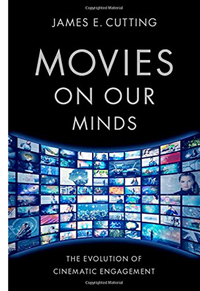 Over the decades, many psychologists have considered how the film medium has fitted itself to our perceptual and cognitive capacities. Julian Hochberg studied how the flow of shots creates expectations that guide our understanding of cinematic space. Under the influence of J. J. Gibson’s ecological theory of perception, Joseph Anderson reviewed the research that supported the idea that films feed on both strengths and shortcomings of the sensory systems we’ve evolved to act in the environment. In more recent years, Jeff Zacks, Joe Magliano, and other visual researchers, have gone on to show how particular techniques exploit perceptual shortcuts (as in Dan Levin’s work on change blindness and continuity editing errors https://vimeo.com/81039224). Outside the psychologists’ community, writers on film aesthetics have fielded similar arguments. An influential example is Noël Carroll’s essay “The Power of Movies.”
Over the decades, many psychologists have considered how the film medium has fitted itself to our perceptual and cognitive capacities. Julian Hochberg studied how the flow of shots creates expectations that guide our understanding of cinematic space. Under the influence of J. J. Gibson’s ecological theory of perception, Joseph Anderson reviewed the research that supported the idea that films feed on both strengths and shortcomings of the sensory systems we’ve evolved to act in the environment. In more recent years, Jeff Zacks, Joe Magliano, and other visual researchers, have gone on to show how particular techniques exploit perceptual shortcuts (as in Dan Levin’s work on change blindness and continuity editing errors https://vimeo.com/81039224). Outside the psychologists’ community, writers on film aesthetics have fielded similar arguments. An influential example is Noël Carroll’s essay “The Power of Movies.”
James Cutting’s Movies on Our Minds: The Evolution of Cinematic Engagement, itself the fruit of many years of intensive studies, builds on these achievements while taking wholly original perspectives as well. Comprehensive and detailed, it is simply the most complete and challenging psychological account of film art yet offered. I can’t do justice to its range and nuance here. Consider what follows as an invitation to you to read this bold book.
Laws of large numbers
The Martian (2015). Publicity still.
Cutting’s initial question is “Why are popular movies so engaging?” He characterizes this engagement—a more gripping sort than we experience with encountering plays or novels—as involving four conditions: sustained attention, narrative understanding, emotional commitment, and “presence,” a sense that we are on the scene in the story’s realm. Different areas of psychology can offer descriptions and explanations of what’s going on in each of these dimensions of engagement.
His prototype of popular cinema is the Hollywood feature film—a reasonable choice, given its massive success around the world. The period he considers runs chiefly from 1920 to 2020. He has run experimental studies with viewers, but the bulk of his work consists of scrutinizing a large body of films. Depending on the question he’s posing, he employs samples of various sizes, the largest including up to 295 movies, the smallest about two dozen. Although he insists he’s not concerned with artistic value, most are films that achieved some recognition as worthwhile. He and his research team have coded the films in their sample according to the categories he’s constructed, and sometimes that process has entailed coding every frame of a movie.
Like most researchers in this tradition, Cutting picks out devices of style and narrative and seeks to show how each one works in relation to our mind. His list is far broader than that offered by most of his predecessors; he considers virtually every film technique noted by critics. (I think he pins down most of those we survey in Film Art.) In some cases he has refined standard categories, such as suggesting varieties of reaction shot.
Starting with properties of the image (tonality, lens adjustments, mise-en-scene, framing, and scale of projection), he moves to editing strategies, the soundtrack, and then to matters of narrative construction. For each one he marshals statistical evidence of the dominant usage we find in popular films. For example, contemporary films average about 1.3 people onscreen at all times, while in the 1940s and 1950s, that average was about 2.5. Across his entire sample, almost two-thirds of all shots show conversations—the backbone of cinematic narrative. (So much for critics who complain that modern movies are overbusy with physical action.) And people are central: 90% of all shots show the head of one or more character.
Some of these findings might appear to be simply confirming what we know intuitively. But Big Data reveal patterns that neither filmmakers nor audiences have acknowledged. Granted, we’ve all assumed that reaction shots are important in cueing the audience how to respond. Cutting argues that despite their comparative rarity (about 15% of a film’s total) they are central to our overall experience: they are “popular movies’ most important narrational device.” They invite the audience to engage with the character’s emotions, and they encourage us to predict what will happen next.
This last role emerges in what Cutting calls the “cryptic reaction shot,” in which the response is ambivalent. Such shots show a moment when a character doesn’t speak in a conversation (for example, Jim’s reactions in my Mission: Impossible sequence). Filmmakers seem to have learned that
these shots are an excellent way to hook the viewer into guessing what the character is thinking—what the character might have said and didn’t. They also serve as fodder for predicting what the character will do next (174-175).
Cryptic reactions gather special power at the scene’s end. Whereas films from the 1940s and 1950s ended their scenes with such shots about 20% of the time, today’s films tend to end conversations with them almost two-thirds of the time. Since reading Cutting’s book I’ve noticed how common this scene-ending reaction shot is in movies (TV shows too). It’s a storytelling tactic that nobody, as far as I know, had previously spotted.
Similarly, Cutting tests Kristin’s model of feature films’ prototypical four-part structure. He finds it mostly valid, both in terms of data clustering (movement, shot lengths, etc.) and viewers’ intuitions about segmentation. But who would have expected what he found about what screenwriters call the “darkest moment”? Using measures of luminance, he finds that “this point literally is, on average, the darkest part of a movie segment” (285).
Cutting has found resourceful ways to turn factors we might think of as purely qualitative into parameters that can be counted and compared. To gauge narrative complexity, he enumerates the number of flashbacks, the amount of embedding (stories within stories), and particularly the number of “narrational shifts” in films. Again, there is a change across history.
Movies jump around among locations, characters, and time frames considerably more often than they used to. . . . Scenes and subscenes have gotten shorter. In 1940, they averaged about a minute and a half in duration, but by 2010 they were only about 30 seconds long (271-272).
His illustrative example is the climax of The Martian, where in four minutes and 35 shifts, the narration cuts together seven locations, all with different characters. Something similar goes on in the motorcycle chase of Mission: Impossible II and the final seventy minutes of Inception.
These examples show that Cutting is going far beyond simply tagging regularities in an atomistic fashion. Throughout, he is proposing that these patterns perform functions. For the filmmakers, they are efforts to achieve immediate and particular story effects, highlighting this or that piece of information. Showing few people in a shot help us concentrate on the most important ones. Conversations are the most efficient way to present goals, conflicts, and character relationships. Editing among several lines of action at a climax builds suspense. He suggests that because viewer mood is correlated with luminance, the darkest moment is triggering stronger emotional commitment.
But Cutting sees broader functions at work underneath filmmakers’ local intentions. Movies’ preferred techniques, the most common items on the menu, smoothly fit our predispositions—our tendencies to look at certain things and not others, to respond empathically to human action, to fit plots together coherently. Filmmakers have intuitively converged on powerful ways to make mainstream movies fit humans’ “ecological niche.”
And those movies have, across a century, found ways to snuggle into that niche ever more firmly. As we have learned the skills of following movie stories, filmmakers have pressed us to go further, stretching our sensory capacities, demanding faster and subtler pickup of information. Cutting’s numbers lead us to a conception of film history, the “evolution of cinematic engagement” promised in his subtitle.
Film history without names
Suspense (Weber and Smalley, 1913).
Central to Cutting’s psychological tradition is the idea that engagement depends minimally on controlling and sustaining attention. The techniques itemized almost invariably function to guide the viewer to see (or hear) the most important information. Filmmakers discovered that you can intensify attention by cooperation among the cues. Given that humans, especially faces, carry high information in a scene, you can use lighting, centered position, frontal views, close framings, figure movement, and other features of a shot to reinforce the central role of the humans that propel the narrative. When the key information doesn’t involve faces or gestures, you can give objects the same starring role.
Movies on Our Minds is very thorough in showing through statistical evidence that all these techniques and more combine to facilitate our attention. As an effort of will you can focus your attention on a lampshade, but it won’t yield much. The line of least resistance is to go with what all the cues are driving you to. But the statistical evidence also points to changes across history. What’s going on here?
Most basically, speedup. Cutting asked undergraduate students to go through films twice, once for basic enjoyment and then frame by frame, recording the frame number at the beginning and ending of each shot. He found that by and large the students enjoyed the older films, but some complained that these older movies were slower than what they ordinarily watched.
This impression accords with both folk wisdom and film research. Most viewers today note that movies feel very fast-moving, compared with older films. There’s also a considerable body of research indicating that cutting rates have accelerated since at least the 1960s. More loosely, I think most people think that story information is given more swiftly in modern movies; our films feel less redundant than older ones. Exposition can be very clipped. Abrupt changes from scene to scene are accentuated by the absence of “lingering” punctuation by fade-outs or dissolves. Indeed, one scene is scarcely over before we hear dialogue or sound effects from the next one. Characters’ motives aren’t always spelled out in dialogue but are evoked by enigmatic images or evocative sound. The Bourne Identity attracted notice not just for its fragmentary editing but also for its blink-and-you’ll-miss-them “threats on the horizon”—virtually glimpses of what earlier films would have dwelled on more. From this angle, Everything Everywhere All at Once represents a kind of cinema that grandpa, and maybe dad, would find hard to follow. (Actually, I’m told that some audiences today have trouble too.)
In The Way Hollywood Tells It, I suggested some causal factors shaping speedup, including various effects of television. Cutting grants that these may be in play, but just as he looks for an underlying pattern of functional factors in his ecology of the spectator, he posits a broad process of cinematic evolution similar to that in biology.
Look at film history simply as succession of movies. From a welter of competing alternatives, some techniques are selected and prove robust. They are replicated, modified in relation to the changing milieu. Others fail. For instance, the split-screen telephone shot of early cinema, as in the above frame from Suspense, became “a failed mutation” when shot/ reverse-shot editing for phone calls became dominant. As the main line of descent has strengthened, variation has come down to “selected tweaks” like eyelights and Steadicam movement.
Within this framework, filmmakers and audiences participate in a give-and-take.Through trial and error, early filmmakers collectively found ways to make films mesh with our perceptual proclivities. As viewers became more skilled in following a movie’s lead, there was pressure on filmmakers to go further and make more demands. If attention could be maintained, then shots could be shorter, scenes could move faster, redundancy could be cut back, complexity could be increased.
Viewers responded positively, embracing the new challenges of quicker pickup. As viewers became more adept, filmmakers could push ahead boldly, toward films like Memento and Primer. The most successful films, often financially rewarding ones like The Martian and Inception, suggest that filmmakers have continued to fit their boundary-pushing impulses to popular abilities.
Which means that audiences have adapted to these demands. But this isn’t adaptation in the strong Darwinian sense. With respect to his students’ reactions, Cutting writes:
I think . . . that the eye of a 20-year-old in the 2010s was faster at picking up visual information than the eye of a 20-year-old in the 1940s. This is not biological evolution. This is cultural education, however incidental it might be.
This process of cultural education, he suggests can be understood using Michael Baxandall’s concept of the “period eye.” Baxandall studied Italian fifteenth-century painting and posited that an adult in that era saw (in some sense) differently than we do today. Granted, people have a common set of perceptual mechanisms, but cultural differences intervene. Baxandall traced some socially-grounded skills that spectators could apply to paintings. In parallel fashion, given the rapidity of cultural change in the twentieth century, young people now may have gained an informal visual education, a training of the modern eye in the conventions of media.
Cutting insists that he isn’t suggesting that our attention spans have recently decreased, as many maintain. Instead, the idea of a period eye centers on
the growth and improvement of visual strategies as shaped by culture. If this idea is correct, then contemporary undergraduates have reason to complain about movies from the 1940s and 1950s that I asked them to watch.
By this account, film teachers have to recognize that their students, for whom any film before 2000 is an old movie, are possessed of a constantly changing “period eye.”
Failed mutations, or revision and revival?
City of Sadness (Hou, 1989).
I do have some minor reservations, which I’ll introduce briefly.
First, I don’t think that Baxandall’s idea of a period eye is a good fit for the dynamic that Cutting has identified. Baxandall’s concern is with a narrow sector of the fifteenth-century public: “the cultivated beholder” whom “the painter catered for.”
One is talking not about all fifteenth-century people, but about those whose response to works of art was important to the artist—the patronizing class, one might say. In effect this means a rather small proportion of the population: mercantile and professional men, members of confraternities or as individuals, princes and their courtiers, the senior members of religious houses. The peasants and the urban poor play a very small part in the Renaissance culture that most interests us now.
Ordinary viewers could recognize Jesus and Mary, the Annunciation or the Crucifixion, but for Baxandall the “period eye” involved a specific skill set. This was derived from such domains as business, surveying, ready reckoning, and a widespread artistic concepts like “foreshortening” or “stylistic ease.” The study of geometry prepared the perceiver to appreciate the virtuosity of perspective or proportion, but the untutored viewer could only marvel at the naturalness of the illusion.
It seems to me that Cutting’s 20-year-olds are not prepared perceivers in Baxandall’s sense. True, they may be alert to faulty CGI or a lame joke, but the whole point of focusing on mass-entertainment movies is that they engage multitudes, not coteries. The techniques Cutting explores are immediately grasped by nearly everybody, and no esoteric skills are necessary to feel their impact. Baxandall’s viewer is able to appreciate a painter’s rendition of bulk because he’s used to estimating a barrel’s capacity, but all Cutting’s viewer needs to get everything is just to pay attention.
Because the skills of following modern movies are so widespread, I wonder if Cutting’s case better fits the explorations of Heinrich Wöfflin, who flirted with the idea that “seeing as such has its own history, and uncovering these ‘optical strata’ has to be considered the most elementary task of art history.” Throughout his late career Wöfflin struggled to make the “history of vision” thesis intelligible. At times he implied that everyone in a given era “saw” in a way different from people in other eras. At other times he proposed that of course everyone sees the same thing but “imagination” or “the spirit” of the period and place shape how we understand what we see. This is murky water, and you can sense my skepticism about it. I don’t see how we could give the “period eye” for cinema much oomph on this front, but I think we might salvage Cutting’s central point. See below.
Secondly, by concentrating on mass-market cinema, “the movies,” and suggesting they fit our evolved capacities, we can easily overlook the alternatives. Obvious examples are the earliest cinema, which did involve some precise perceptual appeals (centering, frontality, selective lighting, emphasis through foreground/background relations) but not all the ones associated with editing. Given that tableau cinema had a longish ride (1895-1920 or so), it’s not inconceivable that, had circumstances been different, we would still have a cinema of distant framings and static long takes.
Cutting is aware of this. Rewind the tape of history, he says, and eliminate factors like World War I, and things could have turned out differently. But where would a long-running tableau cinema leave the story of cinema’s dynamic of natural selection? Would we have simply a steady state, without the acceleration of the last sixty years? Or would we look within the long history of tableau cinema for mutations and failed adaptations?
We have contemporary examples, in what has come to be called “slow cinema.” Hou Hsiao-hsien, Theo Angelopoulos, and other modern filmmakers have exploited the static long take for particular aesthetic effects. In another universe, they are the “movies” that hordes flock to see. Tableau cinema seems to me not a failed mutation, replaced by a style that more tightly meshed with spectators’ proclivities; it was an aesthetic resource that could be revived for new purposes. On a smaller scale, something like this happened with split-screen phone calls (as in Down with Love and The Shallows).
As the other arts show us, the past is available for re-use in fresh ways. Maybe nothing really goes away.
Which brings me to my last point. Baxandall’s emphasis on skills reminds us that we can acquire a new “eye” for appreciating films outside the mainstream. Cutting’s 20-somethings can learn to appreciate and even enjoy films that might strike them as slow. We call this the education of taste.
My inclination is to see the contemporary embrace of speedup as based in filmmakers’ and viewers’ more or less unthinking choices about taste. Indeed, Baxandall suggests that the period eye is a matter of “cognitive style,” a set of skills one person may have and another may lack.
There is a distinction to be made between the general run of visual skills and a preferred class of skills specially relevant to the perception of works of art. The skills we are most aware of are not the ones we have absorbed like everyone else in infancy, but those we have learned formally, with conscious effort: those which we have been taught.
Once the skills have been taught, we can exercise them for pleasure.
If a painting gives us opportunity for exercising a valued skill and rewards our virtuosity with a sense of worthwhile insight about that painting’s organization, we tend to enjoy it: it is to our taste.
I’d suggest that we have “overlearned” the skills solicited by mainstream movies and made them the automatic default for our taste. But we can also learn the skills for appreciating 1910s tableau cinema or City of Sadness. As we do so, we find we have cultivated a new dimension of our tastes. From this standpoint, the sensitive appreciators of slow cinema are far more like Baxandall’s educated Renaissance beholders than are the Hollywood mass audience. Perhaps to enjoy Feuillade or Hou today is to possess a genuine “period eye.”
None of this undercuts Cutting’s findings. But given the variety of options available, I’d argue that what the history of cinema reveals, among many other things, is a history of styles—some of which are facile to pick up, for reasons Cutting and his tradition indicate, and others which require effort and training and an open mind. Not clear-cut evolution, then, but just the blooming plurality we find in all the arts, with some styles becoming dominant and normative and others becoming rarefied . . . until artists start to make them mainstream. And the whole ensemble can be mixed and remixed in unpredictable ways.
There’s far too much in Movies on Our Minds to summarize here. It’s a feast of ideas and information, presented in lively prose. (The studies that the book rests upon are far more dependent upon statistics and graphs.) I should disclose that I read the book in manuscript and wrote a blurb for it. Consider this entry, then, as born of a strong admiration for James’s project.
Cutting’s book rests on years of intensive studies. Go to his website for a complete list. Most recently, he has traced a rich array of phone-call regularities across a hundred years. He has been a recurring player on this blog, notably here and here. James and I spent a lively week watching 1910s films at the Library of Congress, with results recorded here and here. The last link also provides more examples of revived “defunct” devices.
The tradition of film-psychological research I rehearse includes Hugo Münsterberg, The Film: A Psychological Study in Hugo Munsterberg on Film: The Photoplay: A Psychological Study and Other Writings, ed. Allan Langdale (Routledge, 2001; orig. 1916); In the Mind’s Eye: Julian Hochberg on the Perception of Pictures, Films, and the World, ed. Mary A. Peterson, Barbara Gillam, H. A. Sedgwick (New York: Oxford, 2007); Joseph D. Anderson, The Reality of Illusion: An Ecological Approach to Cognitive Film Theory (Southern Illinois University Press, 1996); Jeffrey Zacks, Flicker: Your Brain on Movies (Oxford, 2014). Noël Carroll’s essay “The Power of Movies” is included in his collection Theorizing the Moving Image (Cambridge, 1996).
Michael Baxandall’s most celebrated work is Painting and Experience in Fifteenth-Century Italy (Oxford, 1972); citations come from pages 29-29. My mention of Wölfflin relies on Principles of Art History: The Problem of the Early Development of Style in Early Modern Art, trans. Jonathan Blower (Getty Research Institute, 2015). My citation comes from p. 93.
One reference point for Cutting’s work is a book Kristin and I wrote with Janet Staiger, The Classical Hollywood Cinema, discussed here. See also Kristin’s Storytelling in the New Hollywood, which elaborates the argument for the four-part model, and my books On the History of Film Style and The Way Hollywood Tells It, along with the web video “How Motion Pictures Became the Movies.”
Bye Bye Birdie (1963).
Noir x 3
Repeat Performance (1947).
DB here:
For several years, the Film Noir Foundation has initiated recovery and restoration of a great many neglected films, mostly from Hollywood. Thanks to Flicker Alley, several of those have made their way to DVD and Blu-Ray. (Earlier blog entries have considered the editions of Trapped and The Man Who Cheated Himself.) Now come two more discs, with beautifully restored copies and informative supplements.
The Monogram Touch
The Guilty (1947).
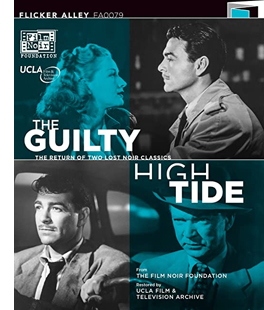 A generous double-feature disc displays what smooth B-filmmaking can look like. High Tide (1947) tells of Tim Slade, a rogue reporter brought back to work under his tough editor, Hugh Fresney. Fresney wants Tim’s help in taking on the city’s crime syndicate. Tim’s position is complicated by his past affair with the wife of the paper’s publisher, who’s hesitant to challenge the mob. A secret file on the gang becomes the target of Tim’s investigation, leading to an amiable former reporter Pop Garrow. The reversals pile up and lead to a surprise revelation at the climax.
A generous double-feature disc displays what smooth B-filmmaking can look like. High Tide (1947) tells of Tim Slade, a rogue reporter brought back to work under his tough editor, Hugh Fresney. Fresney wants Tim’s help in taking on the city’s crime syndicate. Tim’s position is complicated by his past affair with the wife of the paper’s publisher, who’s hesitant to challenge the mob. A secret file on the gang becomes the target of Tim’s investigation, leading to an amiable former reporter Pop Garrow. The reversals pile up and lead to a surprise revelation at the climax.
A noteworthy feature is a significant gap in a key scene. I can’t say more here, but the audio commentary by Alan K. Rode explains that although the complete scene is in the script, every print he has seen contains this omission. He speculates it might have been cut to shorten running time. I also wondered whether, since the print is a British one, the portion might have been snipped for censorship reasons. Interestingly, the AFI plot synopsis includes the scene. But 1947 sources give the original running time as 70 minutes, the same as the version we have, so the mystery remains.
Like other 1940s films, High Tide has a crisis structure. It starts with Tim and Fresney trapped in a car about to be swamped by the incoming tide. We then flash back to the events leading up to that. Director John Reinhardt and cinematographer Henry Sharp give us crisp, no-nonsense scenes making flexible use of depth staging (often to set Tim off as observer) and offering the occasional eye candy.
The main attraction on this double bill is The Guilty. It’s based on a Cornell Woolrich story, first titled “He Looked Like Murder” and republished as “Two Fellows in a Furnished Room.” As with most Woolrich adaptations, the film changes the original considerably. Mike Carr’s roommate Johnny Dixon is accused of murdering Linda Mitchell, twin sister to Estelle (Bonita Granville in a dual role). Dixon goes on the run while Carr investigates and maintains his rough-edged affair with Estelle.
Woolrich’s story doesn’t give us twin sisters or a romantic plot; the emphasis falls on Carr’s disintegrating relation with his roommate. The clues are much the same, but the film adds a flashback structure, with Carr narrating past events to a bartender (and us) as he waits for Estelle. The short story’s solution is predictable, while the film offers a twist ending, heightened by a nifty slippage of that voice-over.
The film’s plot sacrifices coherence for its surprise finale, but the overall result is pretty impressive for a two-week shooting schedule. Out of a few cheap sets, Reinhardt and Sharp create a varied range of angles and modulated lighting.
The film is exceptionally free of gunplay and other violence, but that lack is made up by a remarkable scene in a morgue. The police detective is describing to Carr how Linda was killed. As he stands by the mortuary drawer, his dry account of the grisly murder is chilling. (Once more, sometimes telling beats showing.) It’s close to the same scene in the original story. As Eddie Muller indicates in his introduction, it’s the most shocking scene in the film.
The Guilty also spares time for images that foreshadow the outcome, as in ominous high angles of a street. There’s also the sort of evocative superimpositions that Hollywood occasionally supplies. A purely functional shot of the morgue drawer sliding shut dissolves to a shot of Estelle in bed, at once substituting for her sister and looking ahead to her as a possible victim.
The Guilty typifies the sort of film that deserves to be recognized as a part of a fine Hollywood tradition—the well-made B. I had never seen it or High Tide before, and they reminded me of what could be done at the studio that also gave us the Bowery Boys, Dillinger (1945), and King of the Zombies (1941).
The future’s gonna change
Calling Repeat Performance (1947) a film noir illustrates how elastic the label has become. Yes, it begins with a murder in the manner of Mildred Pierce (1945). There’s a flashy use of chiaroscuro at its climax (surmounting this entry). It’s directed by the elusive Alfred Werker, who signed the woman-in-peril thriller Shock! (1946) and was involved with He Walked by Night (1948). But as Daily Variety’s review pointed out, it’s less a crime story than a “suspense melodrama.” And it traffics in supernatural explanations.
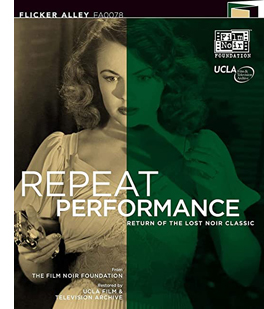 Eddie Muller’s introduction points out that a noir like Night Has a Thousand Eyes (1948) also invokes otherworldly forces. But like the Guilty adaptation, the source has been heavily altered. William O’Farrell’s novel Repeat Performance is told from the viewpoint of a man being hunted for strangling his wife. It’s a thriller more closely tied to the conventions of what we think of as noir. By switching the action to the viewpoint of the wife, and eliminating the police pursuit, the film gives us something closer to another cycle of the 1940s.
Eddie Muller’s introduction points out that a noir like Night Has a Thousand Eyes (1948) also invokes otherworldly forces. But like the Guilty adaptation, the source has been heavily altered. William O’Farrell’s novel Repeat Performance is told from the viewpoint of a man being hunted for strangling his wife. It’s a thriller more closely tied to the conventions of what we think of as noir. By switching the action to the viewpoint of the wife, and eliminating the police pursuit, the film gives us something closer to another cycle of the 1940s.
During that decade, filmmakers continued a Hollywood vein of fantasy—most obvious in the ghost films that proliferated, but also in tales of divine intervention by angels and other forces. Here Comes Mr. Jordan (1941) and It’s a Wonderful Life (1946) visualize alternative futures for their protagonists. Portrait of Jennie (1949) suggests a time stream operating alongside that of normal life, and some films with prophetic dreams suggest that the characters’ fates are determined.
Other media dabbled in the alternative-universes premise. Most famously, J. B. Priestley experimented with forking-path plots in the play Dangerous Corner (1932). (I talk about the film version here.) His later dramas, such as Time and the Conways (1937) and I Have Been Here Before (1937), pursue parallel timelines, but the closest to Repeat Performance, I think, is his remarkable “mystery” An Inspector Calls (1945).
It’s no spoiler to say that the plot of Repeat Performance restarts the time scheme of the action. On New Year’s Eve, as 1947 starts, the actress Sheila Page shoots her husband Barney. But as she leaves the murder scene, she enters the world a year earlier, on the first day of 1946. As the voice-over narration explains, she will relive that year.
After Sheila understands that she has a reprieve, she sets out to change the events that led up to her crime. She tries to keep Barney sober and focused on writing his next play, and above all she struggles to keep her rival Paula Costello away from him. She wants, she says, to “rewrite the third act.” Yet even when she changes the circumstances, accidents intervene to block her efforts. She fears that the onset of 1947 will drive her to kill again. Can she thwart destiny?
The result yields a satiric portrait of Broadway backstabbing, while cleverly suggesting that the changes in Sheila’s future are like revisions of a play in production. During a rehearsal, she suggests improving Act II by “playing it backwards”—that is, putting the scenes in reverse order. Yet they yield the same consequences, just as she will learn that her fate doesn’t care about the particular patterning as long as “the result is the same.”
Like Back to the Future (1985), the film is a time-travel adventure that aims to reset the past. It reminds us that a lot of modern movie storytelling consists of shrewd revisions and updatings of premises that had their sources in earlier Hollywood periods—particularly the 1940s. Fans of The Twilight Zone will have fun with Repeat Performance.
The Film Noir Foundation’s releases abound in no-nonsense supplements. They’re full of historical background to the films, the companies, and the personnel. On these two discs we get a detailed study of producer Jack Wrather, a rich account of the Eagle-Lion company, career summaries of Cornell Woolrich, John Reinhardt, Lee Tracy, and Joan Leslie, a pressbook for Repeat Performance, and informative liner notes. These put us in the debt to filmmaker Steven C. Smith and film historians Alan K. Rode, Eddie Muller, Imogen Sara Smith, Farran Smith Nehme, Brian Light, and many interviewees. Not only the films but the bonus materials are excellent additions to a cinephile’s collection.
The Daily Variety review of Repeat Performance is in the issue of 23 May 1947, p. 3. For my take on Cornell Woolrich and cinema, go here. I discuss Repeat Performance along with other fantasy-laden films of the period in Reinventing Hollywood: How Filmmakers Changed Movie Storytelling, chapter 9.
Repeat Performance (1947).












